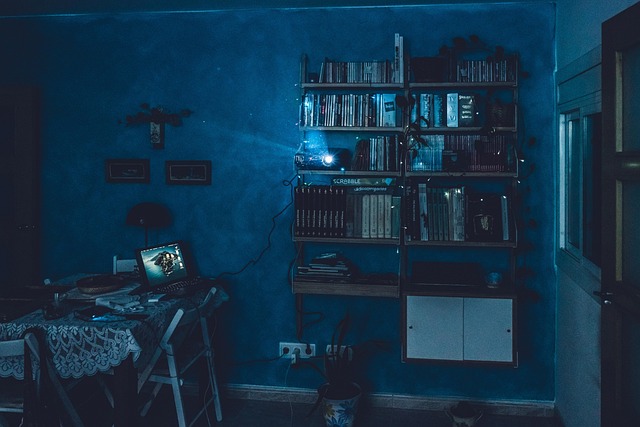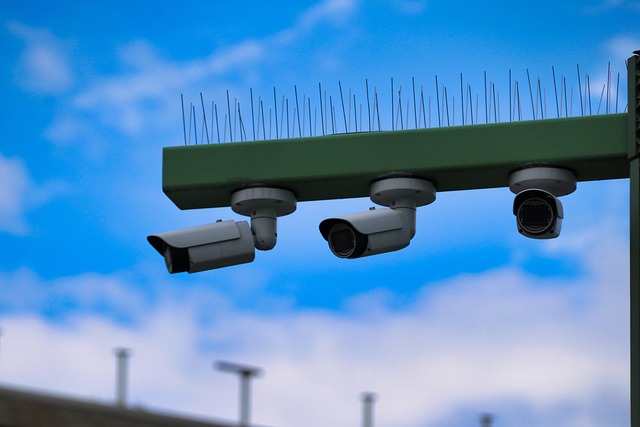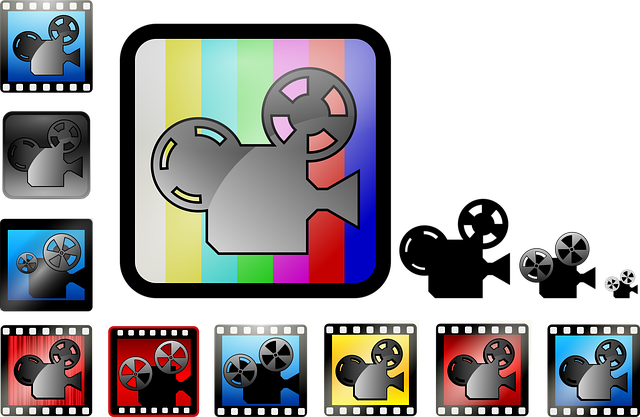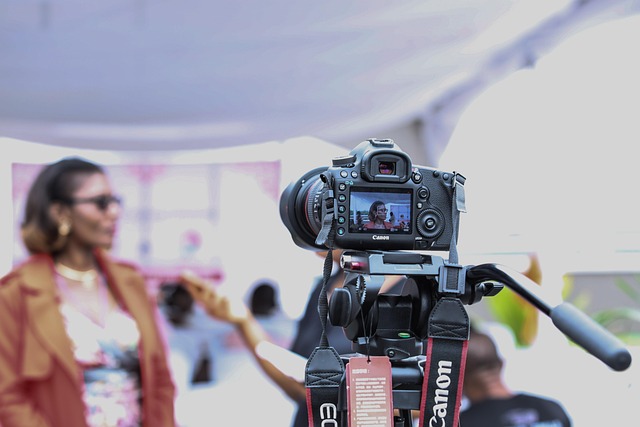Create a professional and distraction-free environment for on-camera interviews with good lighting, minimal clutter, and simple backdrops. Use quality camera and microphone equipment. Master body language for confident communication. Practice clear and concise language in mock interviews. Incorporate visual aids like props to engage viewers and illustrate points, enhancing remote interview narratives.
Interviewing on camera can be intimidating, but with the right preparation, you can excel in any video interview. This guide offers essential tips to help you navigate the digital landscape confidently. From setting up a professional environment to mastering body language and practicing clear communication, each aspect contributes to a successful online interaction. Learn how to engage visuals and enhance your storytelling with props for an impactful video experience.
- Prepare Your Setting: Create a Professional Environment
- Master Body Language: Project Confidence and Engagement
- Practice Clear Communication: Speak Clearly, Concisely
- Engage Visuals: Enhance Your Storytelling with Props
Prepare Your Setting: Create a Professional Environment

When preparing for an on-camera interview, your setting plays a crucial role in making a great impression. Create a professional environment that aligns with the context and expectations of the interview. A clean, well-lit space with minimal distractions is ideal. Ensure your background is presentable and free from clutter; consider using a simple backdrop or a tasteful wall art to enhance the aesthetics without taking away from your focus.
A calm and organized setting allows you to appear confident and engaged during the video interview. Take advantage of good lighting, as it enhances your visual appeal and makes it easier for viewers to understand your expressions and gestures. Additionally, invest in a quality camera and microphone setup to ensure optimal audio and video clarity. By preparing your setting thoughtfully, you can effectively communicate your message and leave a positive impression on your audience, whether they’re hiring managers or potential clients.
Master Body Language: Project Confidence and Engagement

Mastering body language is an essential aspect of interviewing on camera. It’s not just about what you say, but also how you say it—and that includes your gestures, facial expressions, and posture. Projecting confidence through your body language can instantly make a positive impression. Sit or stand upright, maintain eye contact with the camera (as if you’re talking to a real person), and use hand gestures naturally to emphasize points. Avoid crossing your arms, as it might signal defensiveness or disinterest; instead, keep your hands open and relaxed. Engaging with your audience through enthusiastic body language makes your video communication more effective.
Remember that confidence is key to a compelling on-camera interview. Practice in front of a mirror or record yourself to get a sense of what works best for you. If you need help refining your techniques, give us a call at video tutorials for learning new skills. Comparing video formats and standards or exploring video analysis methods can further enhance your performance, ensuring your message is delivered clearly and professionally.
Practice Clear Communication: Speak Clearly, Concisely

Effective communication is key when interviewing on camera. One of the best video editing tips for beginners is to focus on clarity. Speak in a measured pace, using simple and direct language. Avoid jargon or overly complex sentences that might confuse viewers. Concisely convey your thoughts, ensuring each word adds value to the conversation. Practicing clear communication enhances engagement, making your interviews more compelling and accessible to a broader audience.
In the world of video content creation, especially when crafting engaging video content for remote teams, this becomes even more critical. Consider recording practice sessions with a friend or colleague to simulate an interview environment. Give us a call at Video Production for Remote Teams for professional guidance on mastering communication techniques that translate well on camera. This preparation will not only boost your confidence but also help you refine your ability to articulate ideas succinctly, a skill invaluable in the realm of video editing software for beginners.
Engage Visuals: Enhance Your Storytelling with Props

Engage Visuals can significantly enhance your on-camera interview storytelling. Props and objects can serve as powerful tools to illustrate your points, making your content more engaging for viewers. For instance, if you’re discussing a recent trip to an exotic location, bring along souvenirs or photographs; these tangible items will not only capture the audience’s attention but also help them connect with your experience. Incorporating relevant props allows you to weave a vivid narrative that transcends mere words, especially when conducting remote interviews via video calls.
Think of it as painting a picture with real-life objects. This simple technique can transform an ordinary interview into an artistic expression. When planning, consider items that align with your topic and capture the essence of your message. Remember, the goal is to create a captivating visual experience that complements your words, making your video content memorable. So, give us a call at Exploring Video as an Art Form to learn more about these best practices for video editing and how they can elevate your on-screen presence.
Interviewing on camera requires a blend of technical preparation and confident communication. By creating a professional setting, mastering body language, practicing clear speech, and engaging visuals, you can elevate your video content. Remember, the right setup and demeanor will make your interviews dynamic and captivating, ensuring your audience stays engaged from start to finish.








Leave a Reply